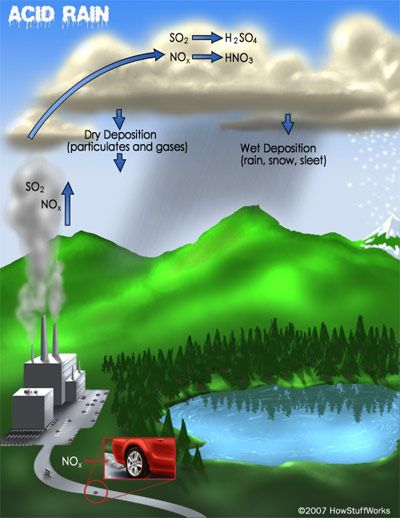Although a certain amount of carbon dioxide (CO2) occurs naturally in the Earth's atmosphere, there are several human activities that increase levels of the greenhouse gas. While some scientists are beginning to focus on rising atmospheric levels of nitrogen trifluoride, methane and soot, the production of CO2 remains a topic of concern for many people -- CO2 accounts for 77 percent of man-made greenhouse gas emissions. What human deeds produce all that gas?
Even basic human activities -- breathing and digesting food -- produce CO2. It's a necessary compound in Earth's life cycles. Actively growing trees and plants absorb CO2 and, with sunlight and water, convert it to food. Trouble looms when we emit more CO2 than our flora can absorb. High carbon dioxide producing activities include:
Advertisement
- Consuming electricity: Burning fossil fuels emits CO2, with coal releasing twice as much of the gas as petroleum. Worldwide, fossil fuels generate 85 percent of electricity. The number of coal-burning plants will increase as China and India continue to industrialize. Currently, 41 percent of CO2 emissions in the U.S. arise from generating electricity.
- Transportation: Whether for business or pleasure, locomotion is the second largest source of U.S. CO2 emissions. International travel is also a factor. A study of cruise ships found that vacationing at sea emits 12 times more CO2 than vacationing on land. The 11-day international Copenhagen Climate Change Conference in Denmark generated 41,000 tons of CO2. U.S. delegates alone produced enough CO2 to fill 10,000 Olympic swimming pools.
- Building: Industrial manufacturing emits lots of CO2, but it only accounts for 2 percent of U.S. emissions. Iron and steel manufacturing and cement production are the biggest offenders. These industries consume monumental quantities of heat energy to convert raw materials into construction products.
- Deforestation: Trees are potent organisms for absorbing and removing CO2 emissions from the air. Cutting them down stops that process. Although deforestation is a minor source of increased CO2 in the U.S., loss of forestlands account for 20 percent of global CO2 emissions. Burning trees for fuel and natural decomposition of forest material also release CO2.
In 2009, U.S. CO2 emissions from fossil fuels declined by 7 percent. That good news is offset, however, by the fact that a global financial crisis is the likely cause. Looking forward, experiments are underway in Europe and the U.S. to capture CO2 from coal-burning electricity generating plants and bury it deep underground. Fly ash, a byproduct of these plants, can be substituted for cement in concrete construction. More employers are also embracing telecommuting in an effort to decrease CO2 emissions from daily driving.
Advertisement

